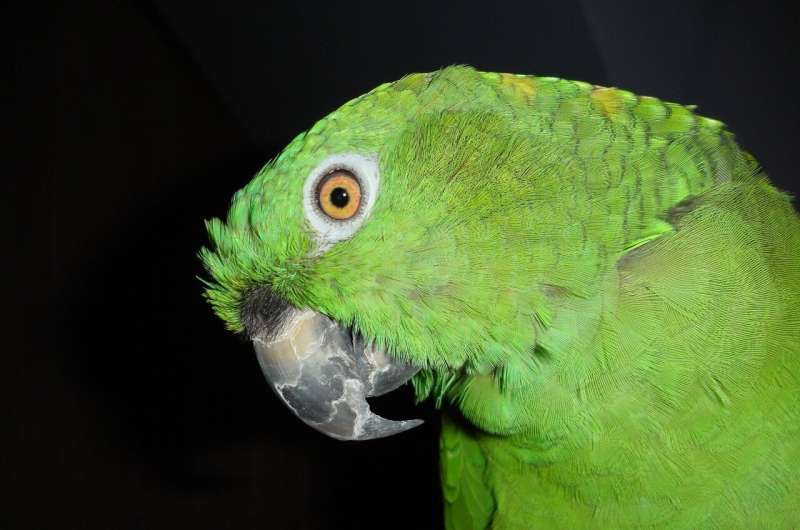This article has been reviewed according to Science X's editorial process and policies. Editors have highlighted the following attributes while ensuring the content's credibility:
fact-checked
peer-reviewed publication
trusted source
proofread
Birds have accents, too: Researchers find cultural change in the dialects of parrots over 22-year period

While distinct languages and dialects are common to human societies, most people are unaware that other species may similarly have culturally significant dialects. New research conducted by a team of researchers from the University of Pittsburgh at Johnstown and New Mexico State University has revealed the dialects of the yellow-naped amazon parrot in its natural range in Costa Rica over a 22-year span.
The study titled "Widespread cultural change in declining populations of Amazon parrots" can be found in Proceedings of the Royal Society B.
The research was completed by Dr. Christine Dahlin of Pitt-Johnstown, and Dr. Timothy Wright, Grace Smith-Vidaurre, and Molly K. Genes of New Mexico State University.
Yellow-naped amazons are large parrots that form long-term pair bonds, roost in large flocks at night, and forage in smaller groups during the day. They use a variety of calls that they learn from each other, of which contact calls are the most common. It is these calls that show the distinct geographic differences characteristic of dialects.
The researchers' initial surveys, conducted in 1994, showed three acoustically distinct contact types, North, South and Nicaraguan, that were each used in a particular area. In 2005, the team resurveyed these areas and found both the acoustic structure and the dialect boundaries to be essentially unchanged.
In contrast, their third survey in 2016 showed a very different picture. In this most recent 11-year span of time, they observed distinct cultural changes. The boundary between the North and South dialects shifted, and new call variants appeared within the area that had formerly only used the South dialect.
In the North dialect, they observed many more bilingual birds using North and South dialects. This period was also one of great disruption for the species. As the population declined, clearing of intensive agriculture increased and the IUCN uplisted the species' status to critically endangered. The observed cultural changes may represent adaptive responses to changing group sizes and patterns of social association.
While further work would be necessary to directly attribute the cultural changes they observed in learned vocalizations to the demographic disruption experienced by this species, this data does emphasize the importance of long-term studies for understanding how culture evolves, and what forces drive this evolution. In addition, their work showcases how the vocal learning ability of parrots may serve an adaptive role in the wild.
More information: Christine R. Dahlin et al, Widespread cultural change in declining populations of Amazon parrots, Proceedings of the Royal Society B: Biological Sciences (2024). DOI: 10.1098/rspb.2024.0659. royalsocietypublishing.org/doi … .1098/rspb.2024.0659
Journal information: Proceedings of the Royal Society B
Provided by University of Pittsburgh


















